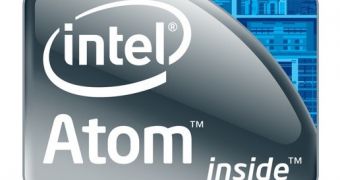With the launch of the Cedarview architecture Intel was expected to bring DirectX 10.1 support to its Atom CPU series, but recent reports suggest this is no longer the case as the chip maker has decided to re-focus its driver development efforts on Windows 8.
Intel started shipping the Atom Cedarview netbook and nettop chips at the end of September, while the official launch is scheduled for sometime later this month.
Compared to their predecessors, these new processors were expected to bring a series of improvements to the graphics core and one of the most important features was the introduction of DirectX 10.1 support.
However, according to VR-Zone's findings, it seems like DX 10.1 hasn't made the new Atom CPUs its way and that Intel has no plans of introducing support for this API in upcoming versions of its graphics card drivers, as some of us have believed.
Furthermore, Intel will only release a 32-bit DirectX 9 driver for the Atom Cedar Trail platform, so those of you hoping to install a 64-bit operating system on a Cedarview netbook or nettop are out of luck.
Other features, such as support for Wireless Display 1.2 and Intel Smart Connect 1.2, won't arrive until next year, but Wireless Display 1.1 should be part of the standard drive package.
The Cedar Trail platform is comprised of the Cedarview processor and the NM10 chipset, which is the same controller logic used by Pine Trail.
These are the first Atom processors to be built using the 32nm fabrication process and feature a unified architecture that packs both the computing cores and the graphics core on the same die.
Speaking of the computing cores, these use the same design as their predecessors, but the operating frequencies have been increased in order to allow for better performance.
More important changes were brought on the graphics front, where the CPUs have gained hardware decoding support for MPEG2, VC1, AVC, and H.264 Full HD content as well as for Blu-ray 2.0.

 14 DAY TRIAL //
14 DAY TRIAL //